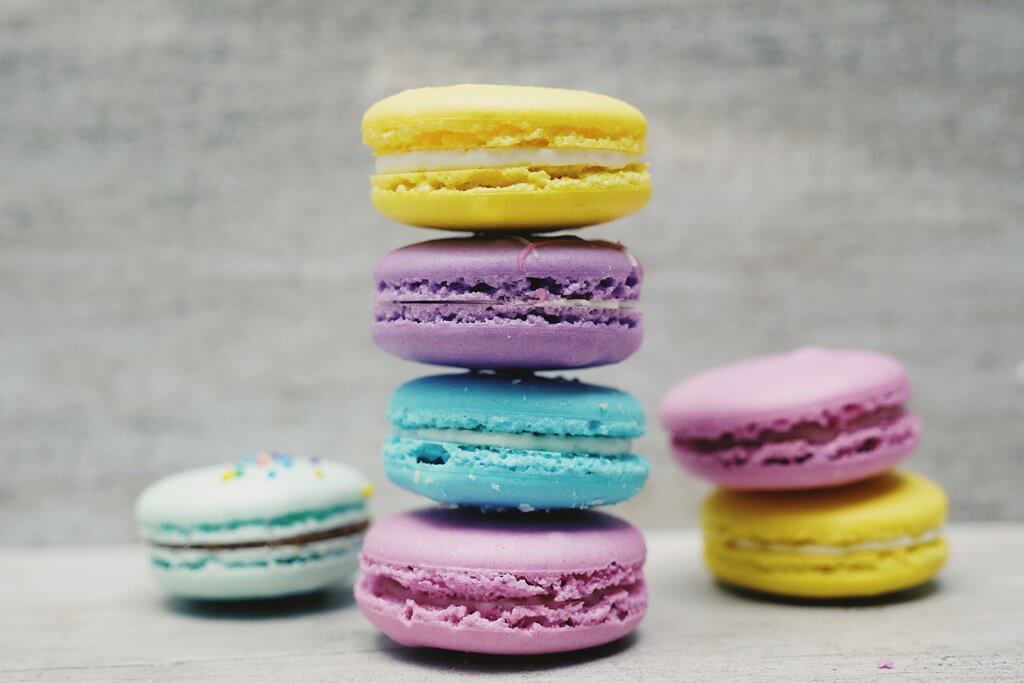Café Culture in Paris
The cafés in Paris are not only a place to eat and drink. Parisian cafés are a social institution, a place to meet with friends or colleagues, but also a pleasurable way of sitting unbothered for a while with a book or just watching the world pass by.
There’s a reason taking café & croissant will forever be one of our absolute favorite things to do in Paris. Cafés in Paris are not only for a cozy break and a hot drink on cold or rainy days. In summer, cafés are great places to sit outside enjoying your coffee, the sun, and views of Paris.
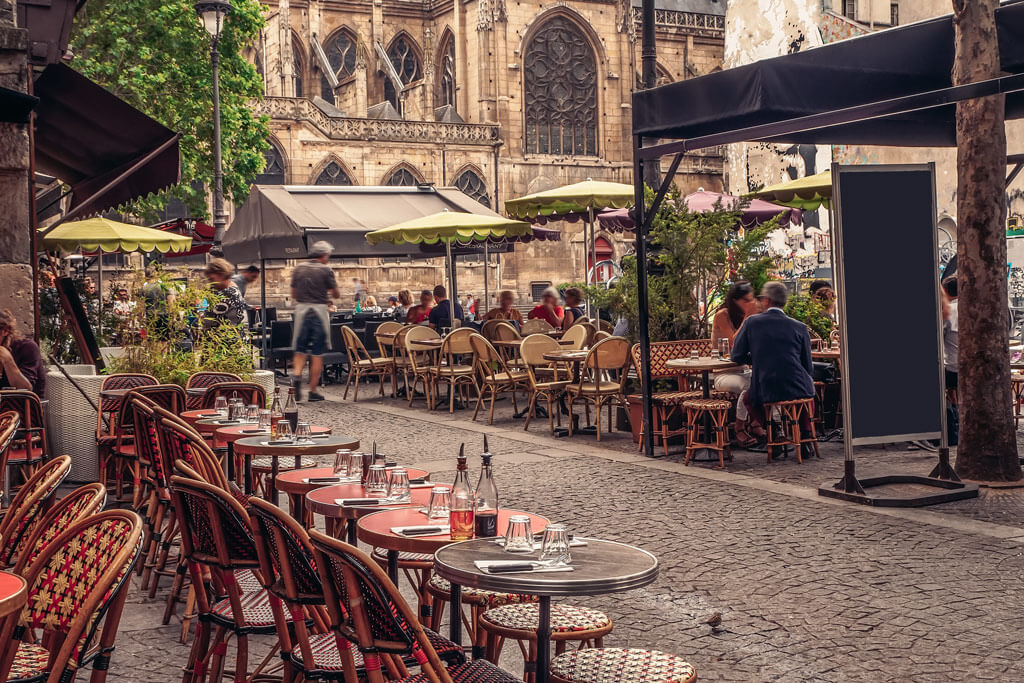
Read more about food in Paris
When to Go
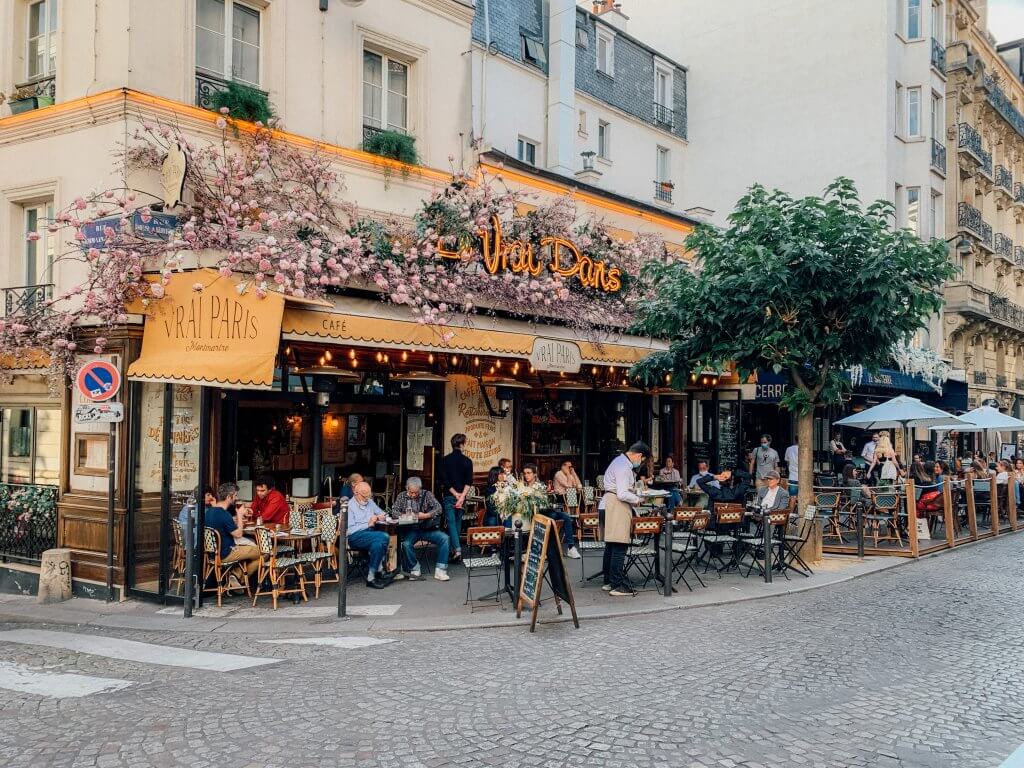
Most cafés in Paris stay open from early in the morning to late in the evening. And they are always busy.
Early in the morning, locals hurry to a neighborhood café to drink a second coffee, often standing or sitting at the bar, to be in good form before work.
Throughout the morning, people like to take their time with a café & croissant and reading the newspaper.
Cafés are usually overcrowded in the afternoon, when they become a place to meet friends, network with colleagues, or take a break after some hours of shopping. Many Parisian cafés have a kitchen and offer snacks, plus a selection of beers and wines.
What to Order in a Parisian Café
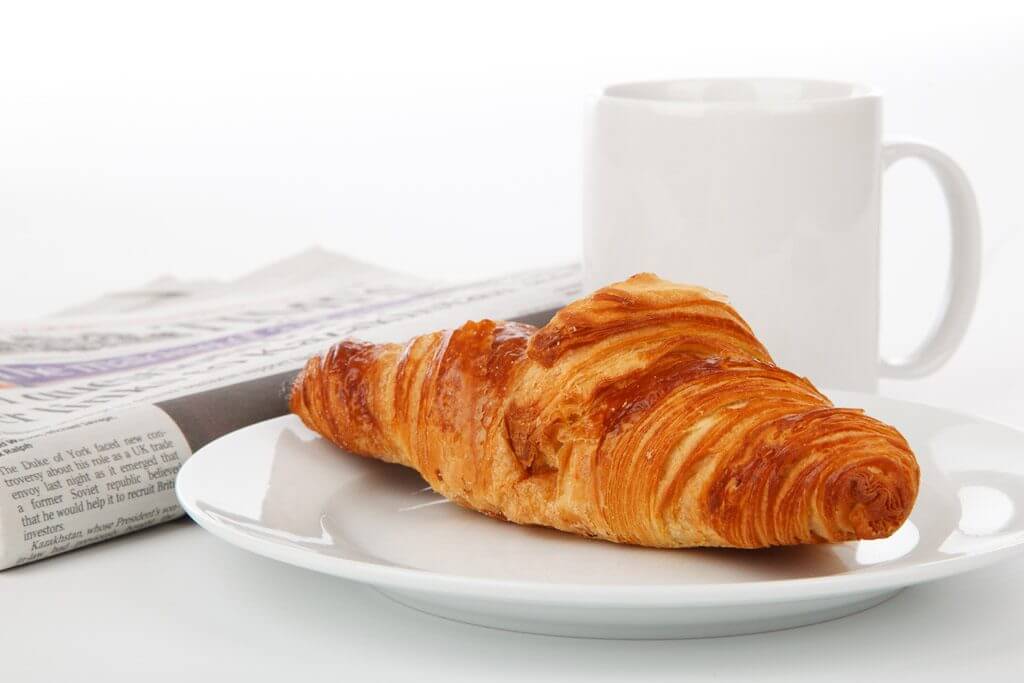
Of course, most people go to a Parisian café to drink coffee, but other hot meals are available like tea, infusions, or hot chocolate.
The options in most cafés in Paris are identical, so don’t be surprised if you don’t receive a menu when you sit in a café: coffee, tea, viennoiseries (croissant, or pain au chocolat), salads, savory snacks such as tartines, and sandwiches like a jambon-beurre or the croque-monsieur.
Historic Parisian Cafés
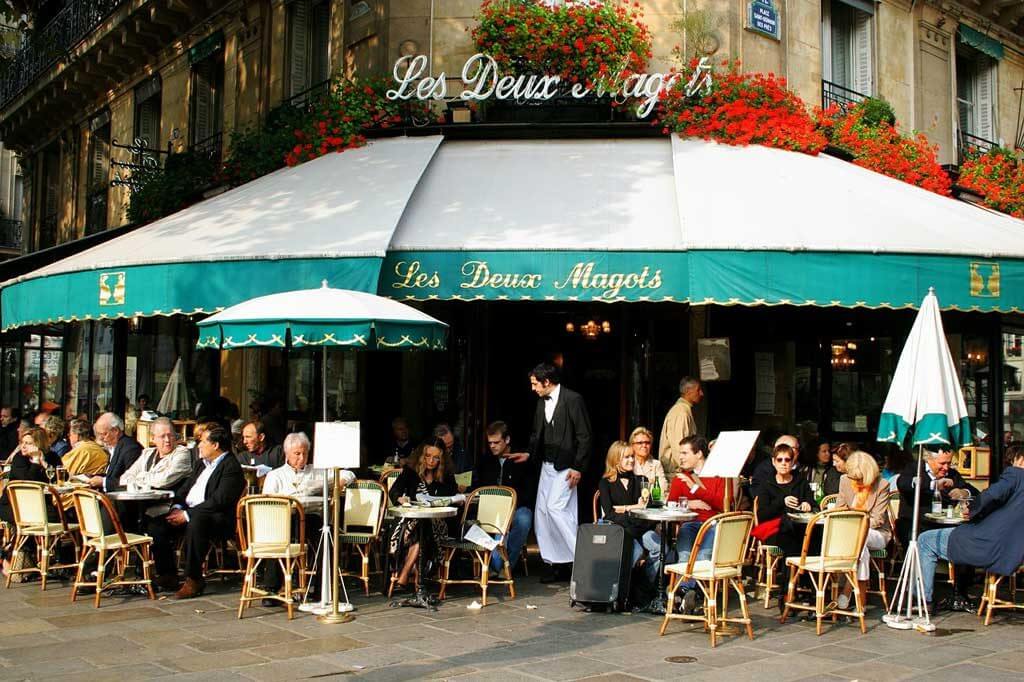
Parisian cafés have been around for centuries. Café Procope, the oldest café in Paris, has been in operation since 1675! And even if there are also plenty of modern cafés offering a cozy atmosphere and delicious cakes, the charm of famous cafés in Paris like Café de la Paix, or Les Deux Magots will likely steal your heart. Here are our favorite historic cafés in Paris:
Café-Croissant – 146 rue Montmartre, Paris 2. This historic café in Paris was originally called ‘A Chope du Croissant’ when it opened in 1820. It is in this café where the French politician Jean Jaurès was assassinated on 31 July 1914. The table where he liked to linger has been preserved as well as the chair broken following the event.
Café de Flore – 172 boulevard Saint-Germain, Paris 6. One of the most famous cafés in Paris, Café de Flore opened its doors in 1887 and was named after a small sculpture representing Flore (an ancient agrarian deity) located on the other side of the street. This historical café in Paris was the meeting place of various writers, artists, and philosophers.
Les Deux Magots – 6 Place Saint-Germain des Prés, Paris 6. Next to Café de Flore, there’s Les Deux Magots, which opened its doors in 1873. This is one of the most prestigious cafés in Paris, also a meeting place of the literary and intellectual elite in Paris. Today, the guests are mainly tourists because of the very high price of drinks and meals.
Café Procope – 13 rue de l’Ancienne Comédie, Paris 6. The Procope opened its doors in 1675. The owner – Francesco Procopio dei Coltelli, later François Procope – was a young nobleman from Palermo who came to Paris to seek fortune. He quickly succeeded as at that time there was not much more than cabarets.
In 1684, he was able to buy three small houses in rue des Fossés-Saint-Germain and replaced them with the current building with a second access from Cour du Commerce Saint-André. Later, the café became a place of discussion where Voltaire, d’Alembert, Rousseau, Diderot etc. met. The Encyclopedia was born here from a conversation between Diderot and d’Alembert. A few years later, it was the meeting place for revolutionaries, and in the days of Romanticism, it was the café of Musset, George Sand, Théophile Gautier, or Balzac.
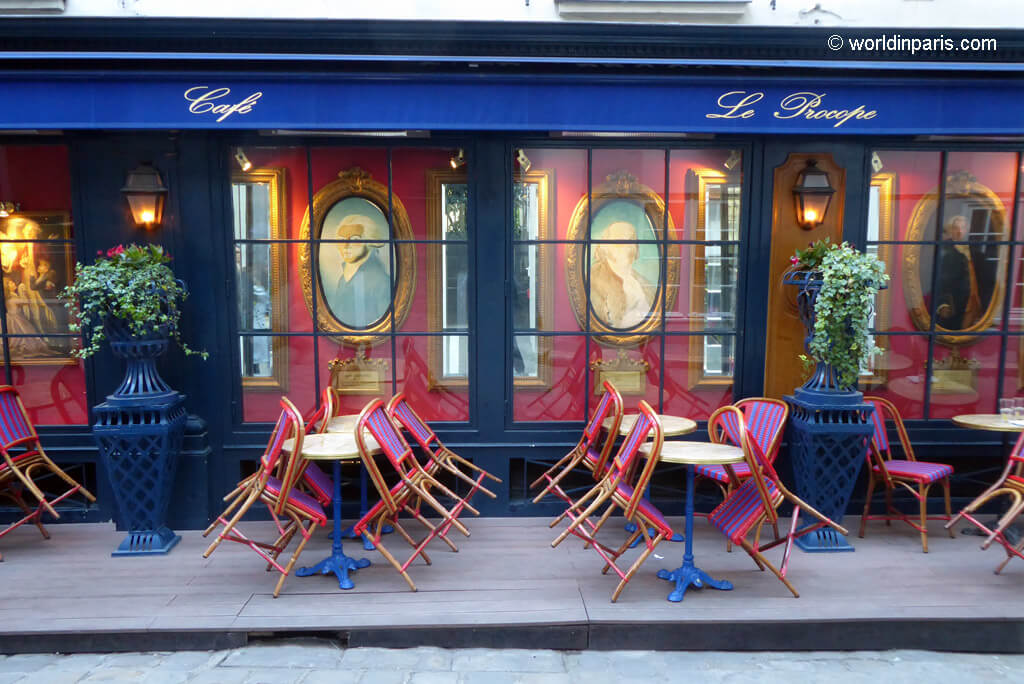
Café de la Paix – 5 Place de l’Opéra, Paris 9. One of the most beautiful historic cafés in Paris, it was built in 1862 in Napoleon III style on the ground floor of a luxurious Haussmannian building which today houses the Inter-Continental Hotel. At that time, it was the café restaurant of the Grand Hôtel de la Paix. Everyone from Emile Zola to Yves Montand spent time at this beautiful café. In 1896, film screenings were organized in the café. The outdoor terrace offers a magnificent view of the Palais Garnier, so it is the perfect place for a drink before a night at the Opera.
The Café Charbon – 109 rue Oberkampf Paris 11. Café Charbon opened its doors in 1900 in an artisan district. This Second Empire café has the look of old-fashioned brasseries with its zinc, red benches, large tarnished mirrors, and high ceilings. Its owner was a certain Madame Lefort who set up a café in the front and a theater (‘Les Follies d’Athènes’) in the back. After various fortunes, it reopened in 1995 in its former configuration, since a concert hall, the entrance to which can be seen on the right, is associated with the establishment.
And there you have it, all about café culture in Paris, with some of the best Parisian cafés. In Paris, café life is an integral part of the local scene, and you simply cannot visit the French capital without participating at least once!

